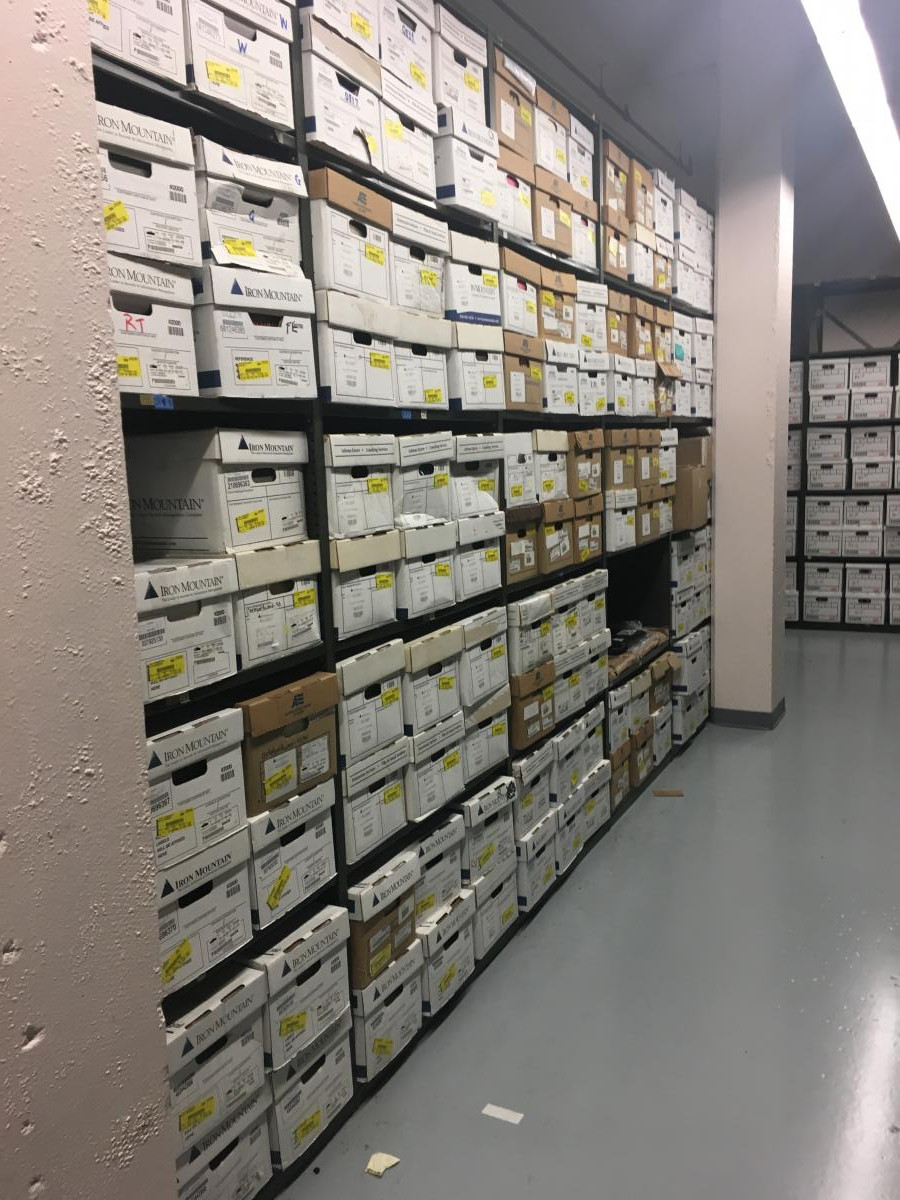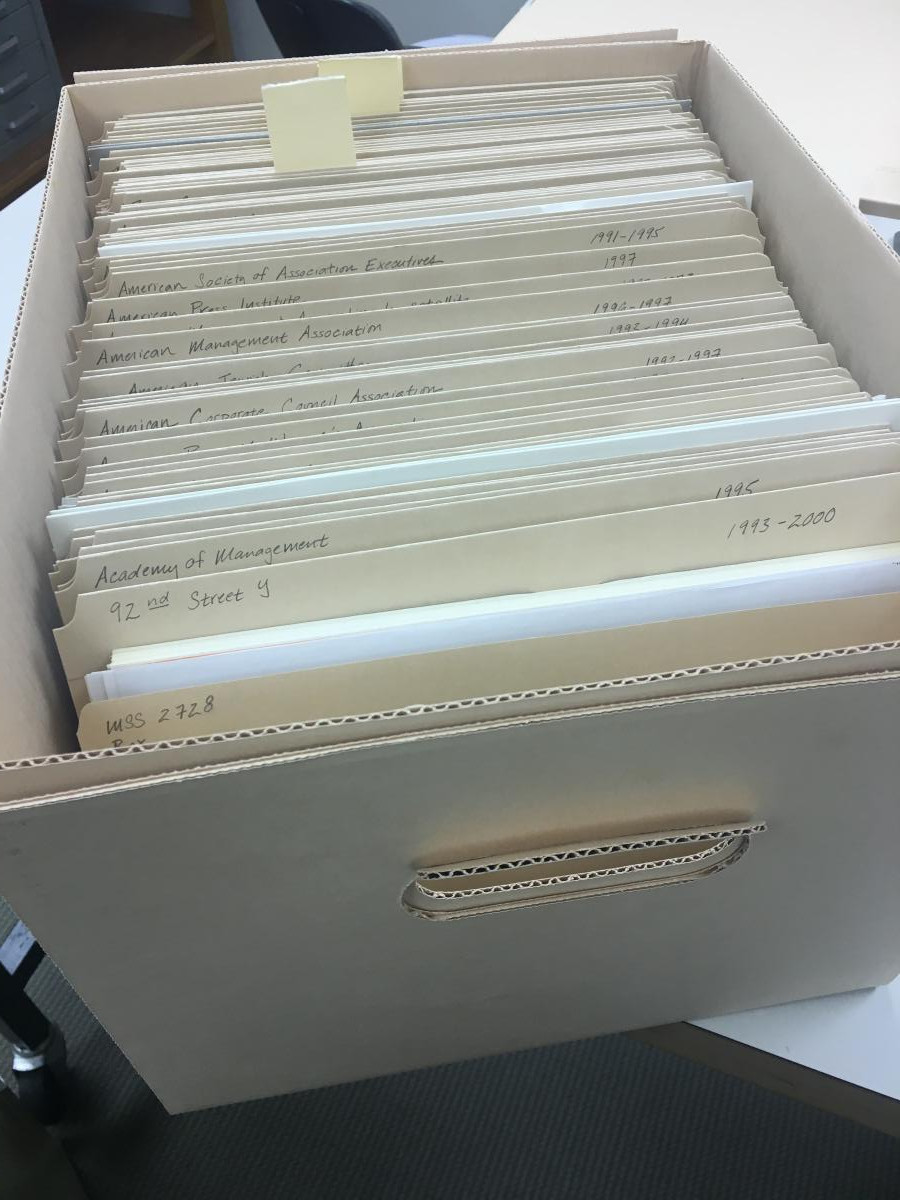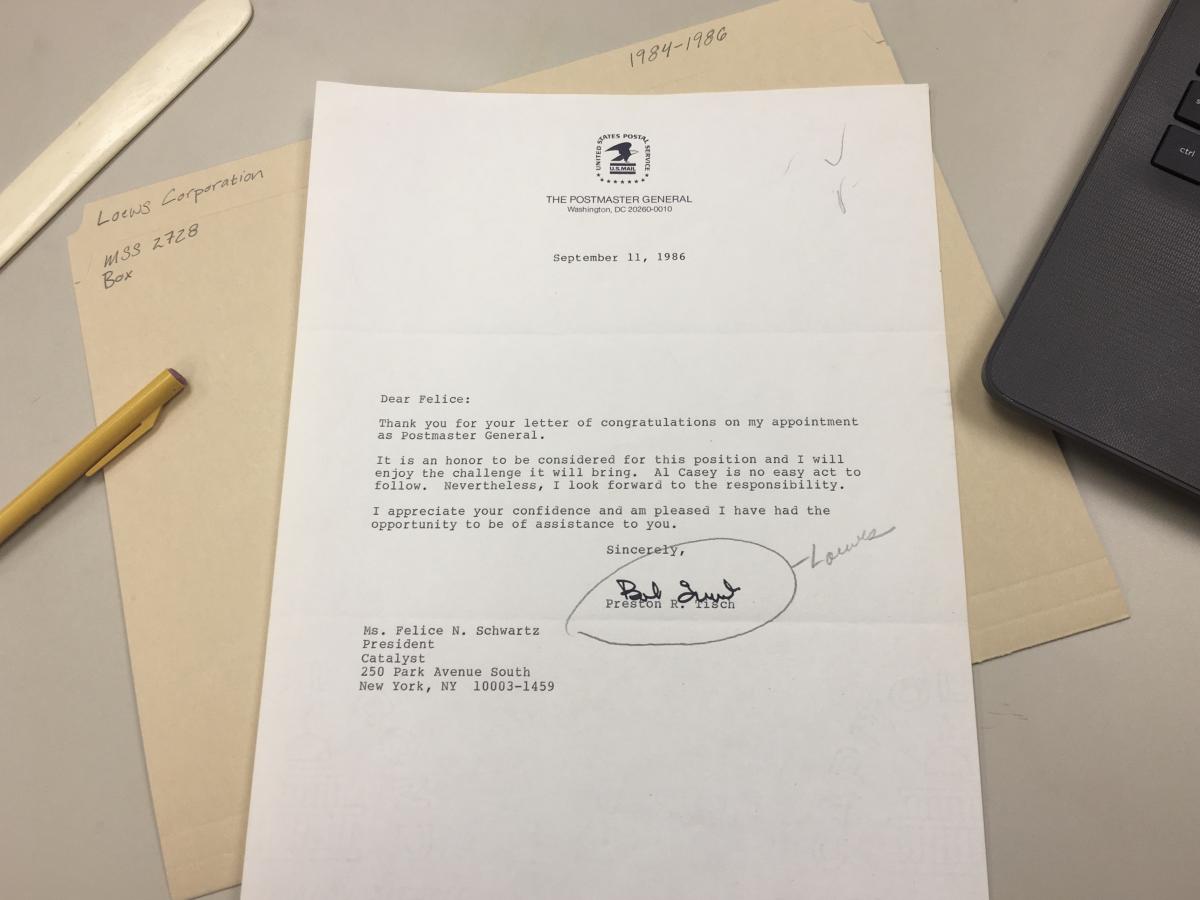“Where do I even begin?” That was the question I asked myself last April, eyeing up my very first assignment as Hagley’s new processing archivist. The boxes, stacked two-deep, stretched down an entire row of shelving—more than 500 of them! It was truly staggering.

The collection before me was the Catalyst, Inc. records; recently arrived at Hagley, this collection documents the history and inner workings of Catalyst, a global nonprofit dedicated to supporting and fostering the advancement of women in the workplace. Founded in 1962 by writer, organizer, and National Women’s Hall of Fame inductee Felice N. Schwartz, Catalyst pursues its mission through “pioneering research, practical tools, and proven solutions to remove barriers and drive change.”[1] Inside those 500 boxes was the documentation of that work—influential research studies such as Women of Color in Corporate Management and the Catalyst Census of Women Corporate Officers and Top Earners; advisory, corporate board placement, and speakers’ bureau files; records of the Catalyst Women’s Workplace Network; and materials related to the annual Catalyst Awards, held in New York to honor corporate initiatives that “result in the recruitment, development, and advancement of women in the workplace.”[2]
One of the first steps in archival processing is to work out an intellectual and physical arrangement for a collection. This involves getting to know the materials and understanding how they fit together, and often entails quite a bit of background research. Then the trick is to arrange the materials in a way that will be useful to researchers while also remaining faithful to the context in which the records were created—their original order. With a collection as big as Catalyst, that was going to be quite a job, even before the actual processing began! Luckily, my colleague, managing archivist Clayton Ruminski, had created a box-level inventory not long before I arrived. With this inventory—plus some digging through the actual boxes—I was able to divide the collection into subsets, or series, that obviously went together and then assemble an overall scheme for the collection’s organization. With some time and patience (plus lots of acid-free folders!) the entire collection should be open for researchers sometime in 2021. The records are anticipated to be relevant to a wide range of research interests—from the changing role of women in the workplace, to global feminism, to twentieth-century corporate history.
Watch this space for continuing developments!


[1] “Catalyst: What We Do.” Catalyst: Workplaces that Work for Women. Catalyst, https://www.catalyst.org/what-we-do/
[2] Lang, Ilene H. Letter from the President. Catalyst 20th Anniversary Awards Compendium. [New York: Catalyst, 2007.] p. iii.
Diane E. Bockrath is a Processing Archivist at Hagley Museum and Library.
